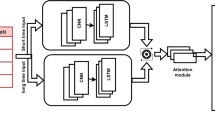Abstract
Modern and future vehicles are complex cyber-physical systems. The connection to their outside environment raises many security problems that impact our safety directly. In this work, we propose a Deep CAN intrusion detection system framework. We introduce a multivariate time series representation for asynchronous CAN data which enhances the temporal modelling of deep learning architectures for anomaly detection. We study different deep learning tasks (supervised/unsupervised) and compare several architectures, in order to design an in-vehicle intrusion detection system that fits in-vehicle computational constraints. We conduct experiments with many types of attacks on an in-vehicle CAN using SynCAn Dataset.
Access this chapter
Tax calculation will be finalised at checkout
Purchases are for personal use only
Similar content being viewed by others
Notes
- 1.
See https://github.com/anonymeEG/Deep-Learning-4-IDS for implementation.
References
Avatefipour, O., Malik, H.: State-of-the-art survey on in-vehicle network communication (can-bus) security and vulnerabilities. CoRR (2018)
Bagnall, A.J., Bostrom, A., Large, J., Lines, J.: The great time series classification bake off: an experimental evaluation of recently proposed algorithms. extended version. CoRR abs/1602.01711 (2016)
Bai, S., Kolter, J.Z., Koltun, V.: An empirical evaluation of generic convolutional and recurrent networks for sequence modeling. CoRR abs/1803.01271 (2018)
Dupont, G., den Hartog, J., Etalle, S., Lekidis, A.: Network intrusion detection systems for in-vehicle network - technical report. CoRR (2019)
Seo, E., Song, H.M., Kim, H.K.: Gids: gan based intrusion detection system for in-vehicle network. In: 2018 16th (PST) (2018)
Farsi, M., Ratcliff, K., Barbosa, M.: An overview of controller area network. Comput. Control Eng. J. 10(3), 113–120 (1999)
Martinelli, F., Mercaldo, F., Nardone, V., Santone, A.: Car hacking identification through fuzzy logic algorithms. In: 2017 (FUZZ-IEEE), pp. 1–7 (2017)
Hanselmann, M., Strauss, T., Dormann, K., Ulmer, H.: An unsupervised intrusion detection system for high dimensional CAN bus data. CoRR (2019)
Hochreiter, S., Schmidhuber, J.: Long short-term memory. Neural Comput. 9(8), 1735–1780 (1997)
Hoppe, T., Kiltz, S., Dittmann, J.: Security threats to automotive CAN networks - practical examples and selected short-term countermeasures. Reliab. Eng. Syst. Saf. 96(1), 11–25 (2011)
Kang, M.J., Kang, J.W.: Intrusion detection system using deep neural network for in-vehicle network security. PLoS ONE 11, 1–17 (2016)
Koscher, K., et al.: Experimental security analysis of a modern automobile. In: 31st IEEE S&P (2010)
Moore, M.R., Bridges, R.A., Combs, F.L., Starr, M.S., Prowell, S.J.: A data-driven approach to in-vehicle intrusion detection. In: CISRC ’2017 (2017)
Nilsson, D.K., Larson, U., Picasso, F., Jonsson, E.: A first simulation of attacks in the automotive network communications protocol flexray. In: CI- SIS’2008 (2008)
Oord, V., et al.: A generative model for raw audio (2016)
Pawelec, K., Bridges, R.A., Combs, F.L.: Towards a CAN IDS based on a neural-network data field predictor. CoRR (2018)
Song, H.M., Woo, J., Kim, H.K.: In-vehicle network intrusion detection using deep convolutional neural network. Veh. Commun. 21, 100198 (2020)
Young, C., Olufowobi, H., Bloom, G., Zambreno, J.: Automotive intrusion detection based on constant CAN message frequencies across vehicle driving modes. In: AutoSec (2019)
Song, H., Woo, J., Kang, H.: Automotive intrusion In-vehicle network, Controller area network (CAN), Intrusion detection, Convolutional neural network. VC (2020)
Author information
Authors and Affiliations
Corresponding author
Editor information
Editors and Affiliations
Rights and permissions
Copyright information
© 2020 Springer Nature Switzerland AG
About this paper
Cite this paper
Gherbi, E., Hanczar, B., Janodet, JC., Klaudel, W. (2020). Deep Learning for In-Vehicle Intrusion Detection System. In: Yang, H., Pasupa, K., Leung, A.CS., Kwok, J.T., Chan, J.H., King, I. (eds) Neural Information Processing. ICONIP 2020. Communications in Computer and Information Science, vol 1332. Springer, Cham. https://doi.org/10.1007/978-3-030-63820-7_6
Download citation
DOI: https://doi.org/10.1007/978-3-030-63820-7_6
Published:
Publisher Name: Springer, Cham
Print ISBN: 978-3-030-63819-1
Online ISBN: 978-3-030-63820-7
eBook Packages: Computer ScienceComputer Science (R0)




